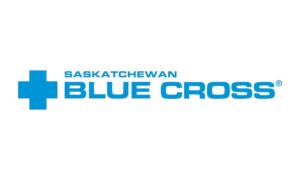Casualty ILS market size can be multiples of property cat: Fleming

Fleming Insurance Holdings and Altamont Capital Partners expect cedents to embrace their flexible, proprietary Planned Loss Portfolio Transfer (LPT) solution as it looks to capitalise on the big opportunity that is the casualty insurance-linked securities (ILS) market.
In early August, Fleming, a property and casualty prospective and retrospective capital solutions provider, added Samir Khare to its roster to lead the buildout of its nascent casualty ILS platform.
The company, which owns Fleming Re and is sponsored by private equity firm Fleming Corp., with a majority investment stake from Altamont Capital Partners, believes the potential for the casualty ILS market is substantial.
In light of this, Artemis spoke with Khare, Head of Casualty ILS Solutions, as well as Fleming’s Chief Executive Officer (CEO), Eric Haller and Joe Zuk, Operating Partner at Altamont Capital Partners, about the company’s strategy.
“When we started Fleming, we wanted to change the paradigm for legacy providers,” said Haller. “In addition to other strategic initiatives, we wanted to develop a solution to facilitate access to casualty liabilities for the capital markets. This solution is our proprietary Planned LPT Solution. Coincidentally, this solution is flexible and can also be used for recurring legacy transactions.”
“Altamont shared the same vision as Fleming with regard to the convergence of the legacy and ILS markets. We are excited to be at the forefront of this evolution and support Fleming’s continued growth,” added Zuk.
Initially, the risks underpinning Fleming’s push into casualty ILS will have a focus on low volatility legacy reserves on a retrospective basis, with its Planned LPT product to be used alongside casualty ILS structures as a way to shorten the liability tail.
“I would expect cedants to embrace these solutions,” said Haller. “On top of the traditional benefits of a legacy transaction, the Planned LPT Solution will also create transaction efficiencies, reduce time and other frictional costs of one-off transactions and provide an ongoing tool to enhance capital management.”
From the investor side, Khare explained that initial reception has been positive, although conversations remain in the preliminary stages.
“Our plan is to strategically build the platform with a focus on risk management and strong risk adjusted returns. We will also be putting capital alongside other investors to ensure all parties interests are aligned. We expect to be able to deploy a significant amount of third-party capital over time,” said Khare.
While generally casualty insurance risks have low to moderate correlation with the capital markets and lower volatility relative to property catastrophe, the capital markets have been reluctant to embrace casualty liabilities owing to the longer tail of the business. But this is where the firm’s Planned LPT solution comes into play, as it “helps make these risks more accessible by shortening duration, with the flexibility to provide liquidity to investors at different points in time by tranching the casualty liability tail,” noted Khare.
“This is a significant proprietary benefit that should make this very attractive to investors,” he added.
Expanding on this, Haller explained that as the firm’s ILS structures will incorporate its Planned LPT product, which will define pricing at a future date, this enables significant flexibility to manage the tail risk.
In terms of lock-in duration, Khare told Artemis that Fleming envisages an investment horizon of three to four years, although the flexibility of the structure does allow for earlier redemptions due to unforeseen circumstances. He also noted that, currently, both fund-like and sidecar-type structures are under consideration.
Despite the use of capital market investor capital, Haller stressed that he doesn’t expect this to result in Fleming being able to operate with a lower cost-of-capital, but rather foresees that return hurdles will be proportional to the degree of risk and be similar to the returns it prices when first writing the risk on its own balance sheet.
“However, the structuring of casualty ILS might allow for a more efficient and holistic solution for a carrier, especially with an option to broaden the relationship past a traditional prospective reinsurance placement,” said Haller.
So, just how much of an opportunity is the casualty ILS market? According to Khare, it’s “Big!”
“The alternative reinsurance space for property cat covers about $100 billion of limit. Globally, the run-off market is estimated to have over $800 billion reserves, and prospective casualty business is increasing over time with inflationary pressures and risk premiums.
“Casualty ILS is only in its infancy, and with solutions such as Fleming’s, which helps address the tail by providing a means to get liquidity earlier than previously allowed for, the casualty ILS market has the potential to be multiples of the property cat market over time,” said Khare.
——————————————————————— Tickets are selling fast for Artemis London 2022, our first ILS conference in London. Sept 6th, 2022.
Tickets are selling fast for Artemis London 2022, our first ILS conference in London. Sept 6th, 2022.
Register soon to ensure you can attend.
Secure your place at the event here!
—————————————






